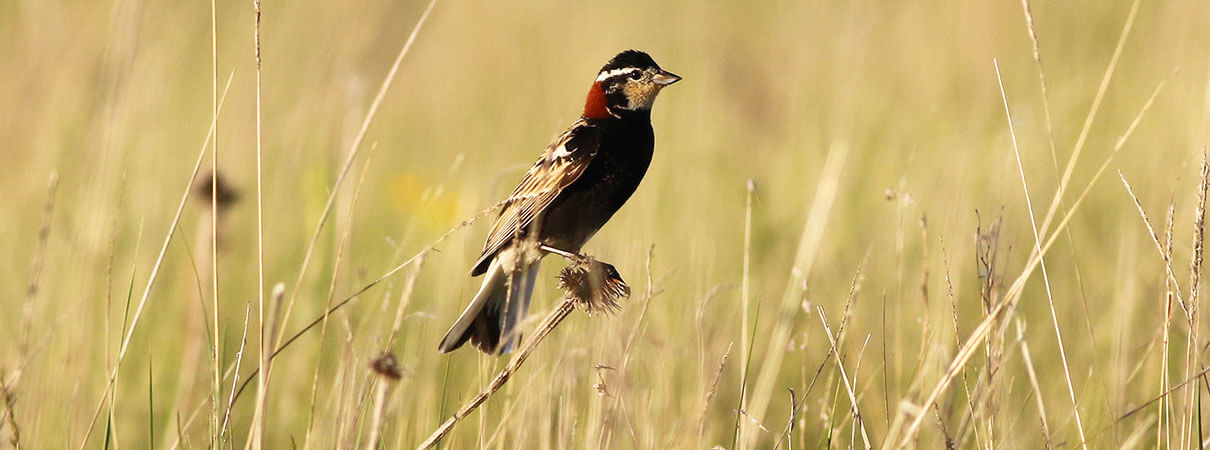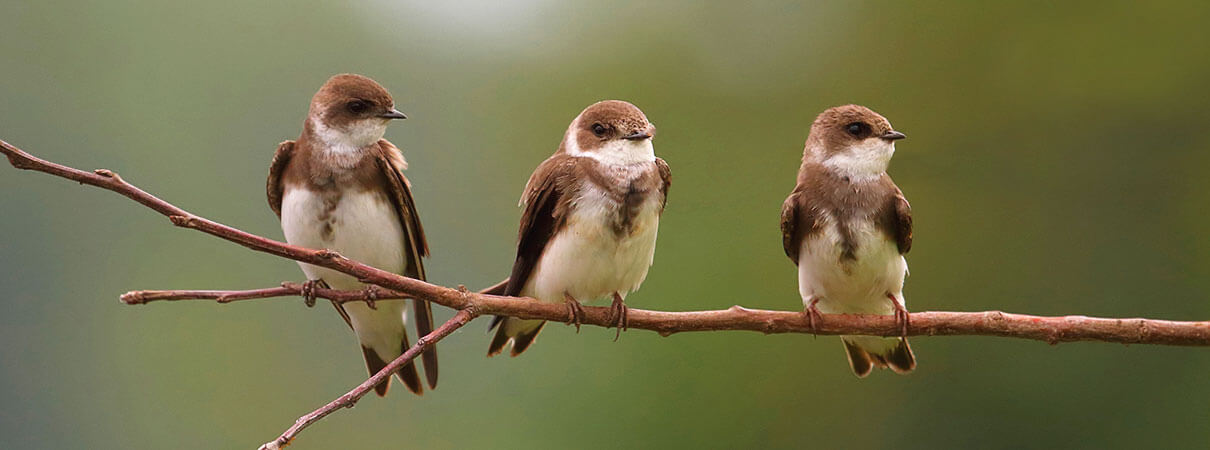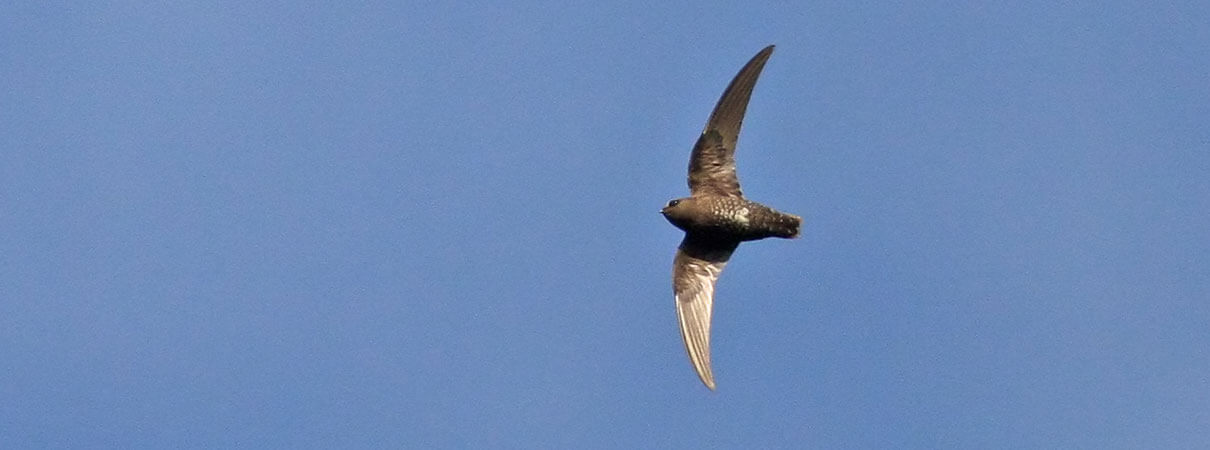Top Five Birds in Decline: A Birder's Perspective
This blog focuses on the top five North American bird species showing the greatest declines over the last 50 years.
A 2019 Science study noting that 3 billion birds were lost since 1970 focused on bird groups, but the species-decline percentages below come from trend data used in the analysis.
Exact reasons for the bird population declines are very hard to pinpoint, but conservationists have educated guesses as to why numbers of these birds are plummeting.
The following five species have undergone steady, rapid declines. None are imminently threatened with extinction, but steady declines are a worrisome first step in that direction that includes the loss of many local populations.
5. King Rail (86 percent decline)
Lurking in eastern freshwater wetlands under thick cover, the King Rail is a prized observation for most birders. Crayfish and a variety of other marsh denizens fall prey to this stealthy marshbird, but food supplies and habitats have been lost on a large scale over the years, as wetlands have been filled or drained for industrial, agricultural, and urban development. Another threat: pesticides leaching into wetlands. These rails have also been lost in protected areas where water levels have changed, resulting in vegetation changes not suitable for this species.
Conservation outlook: Much of the remaining top-notch wetland habitat for this species falls within national wildlife refuges and other protected areas. Also important are wetland restoration efforts, if done in a way that benefits this species.
4. Chestnut-collared Longspur (88 percent decline)
Cloaked in drab, sparrow-like plumage from August into March, the male Chestnut-collared Longspur transforms into a prairie beauty in spring, its pied head framed by a chestnut nape and ink-black belly.
The bird group showing most decline overall is the grassland birds, and this species certainly has lost a great deal of its native grassland habitat over the years. The remaining dry prairies of the northern Great Plains are the breeding range of this gaudy songster, but the wintering grounds are short-grass expanses from southern Kansas to northern Mexico.
On the nesting grounds, large quantities of insects are key because these birds are feeding their fast-growing young. Where native grasslands remain, numbers remain robust. Unfortunately, many of these areas are gone. Pastures that incorporate rotations of livestock to prevent overgrazing can support Chestnut-collared Longspurs and the other species sharing the same habitat, including a large grassland-nesting shorebird called the Long-billed Curlew.
Conservation outlook: Chestnut-collared Longspur populations remain on many public lands within its range. Where prescribed burns, rotational grazing, and sometimes mowing occur, these birds can still flourish. Oil and gas development on public lands, however, may cause fragmentation that breaks up the large habitat expanses of more than 115 acres required by this species.
3. Bank Swallow (89 percent decline)
The Bank Swallow is North America's smallest swallow, nesting in steep sand or dirt banks and wintering in South American lowlands. Birders watch for this zippy swallow among mixed swallow flocks during migration, but once the birds reach their colonies, they stick with their own kind, getting to work digging nest burrows sometimes up to five feet long.
Because these birds feed on many types of flying insects, their decline may be due, at least in part, to the decline of their prey from widespread pesticide use. The Bank Swallow remains relatively common and in color is most easily confused with another brown-backed species, the larger and smoother-flighted Northern Rough-winged Swallow. Immature Tree Swallows also have brown backs. But when you set your binoculars on a mixed swallow flock perched on a powerline, for example, you can easily pick out the smaller Bank Swallows by size and their distinctive brown breastband.
Conservation outlook: Pesticide testing and careful regulation and bans, where needed, remain critical for ensuring a bright future for aerial insectivores including the Bank Swallow. Locally, protecting colonies from disturbance is important.
2. Black Swift (89 percent decline)
The Black Swift is the U.S. and Canada's largest swift, an aerialist fond of sheer cliffs that frequents scenic terrain, wheeling around for high-flying insects and zipping behind waterfalls that often conceal their nests. In some places, they raise their young in sea caves. As is true of many insect-eating birds, the Black Swift winters far south of the United States. Where exactly remains somewhat of a mystery, challenging in part because resident Black Swift populations occur in Mexico, Central America, and the Caribbean. Central America and South America are likely the migrants' winter destinations.
Birders watch for the Black Swift at known sites, and some are lucky enough to see them during migration. Reasons for their decline are tricky to pinpoint, but might be linked to dropping insect populations and habitat loss at localized colonies. Water diversion projects that lower flows of waterfalls and climate change may also play roles. Rocky Mountain nest sites, for example, are often behind waterfalls fed by shrinking glaciers and snowfields. Pesticide use could play a role in insect declines, and in protected areas where habitat loss is not an issue, disturbance to nest sites by climbers and hikers could affect Black Swift nesting.
Conservation outlook:
Because it is localized and sensitive to disturbance, Black Swift populations need careful monitoring. Also, pesticide regulation or, if necessary, bans should be in place to ensure that the chemicals we use on crops are not contributing to the decline in aerial insectivore populations.
1. Evening Grosbeak (90 percent decline)
When I was 12 years old, I hammered together some of my childhood blocks, fashioning them into one of my first feeders. I remember laboring over math homework one morning, then looking out in the backyard for comfort. There, sitting on the new feeder was one male and two female Evening Grosbeaks. I still remember the thrill of that moment: Of the birds I'd hoped to draw to our yard, the Evening Grosbeak topped the wish list! Back then, Evening Grosbeaks showed up in Maryland in small numbers each year unpredictably, and in larger numbers during “irruption” years, likely when food supplies dropped sharply in the north.
This bulky finch breeds in coniferous and mixed forests and can be found year-round in all but the northernmost parts of its range. During winter, flocks may wander south of the nesting grounds in the East, but their numbers in that region are now way down.
Conservation outlook: This species' decline is baffling, in part because much forest remains in most of its range. Evening Grosbeaks feed on spruce budworms, a cyclical insect, in many areas, and warblers and other songbirds seem to surge or ebb with this insect's boom or bust cycle. But the grosbeak's decline has remained steady.
 |
Howard Youth is ABC's Senior Writer/Editor, and is the author of Field Guide to the Natural World of Washington, D.C. |























































